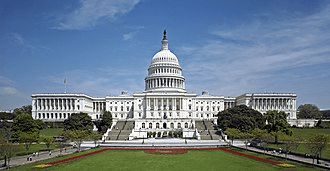Intro to the U.S. Constitution
Preamble
Article that establishes the Legislative Branch (Congress)
Article I
House of Congress with only 100 members (2 per state)
the Senate
1st Amendment
Right to bear arms
2nd Amendment
Article that establishes the Judicial Branch (Supreme Court and lower Federal Courts)
Article III
Article that establishes the Executive Branch (Presidency, Vice Presidency, and the Executive Departments)
Article II
House of Congress with 435 members (based on state population)
No quartering (housing) of troops
3rd Amendment
No unreasonable searches and seizures of private property without a warrant
4th Amendment
Article that describes the power of the states
Article IV
Article that states the Constitution cannot take effect until at least 9 out of 13 states approve it
Article VII
What building is this?
The Capitol Building
Right to a jury trial
7th Amendment
Protection from cruel and unusual punishment
8th Amendment
Article that states the national (federal) government is the Supreme Law of the Land (known as Federalism)
Article VI
Describes the rules for amending the Constitution
Article V
To PROPOSE (introduce) an amendment to the Constitution, THIS amount of both houses of Congress must vote yes
Two Thirds (2/3)
Protection from double jeopardy, self incrimination, and eminent domain, as well as the right to due process under the law
5th Amendment
Right to a speedy and public trial, as well as the right to legal counsel (a lawyer)
6th Amendment
The 1st 10 amendments to the Constitution
The Bill of Rights
The 27 changes made to the Constitution
Amendments
To RATIFY (approve) an amendment to the Constitution, THIS amount of state legislatures must vote yes
Three Fourths (3/4)
Powers not given to the U.S. government are granted to the people and the states
10th Amendment
Not all rights belonging to people are listed in the Constitution
9th Amendment
